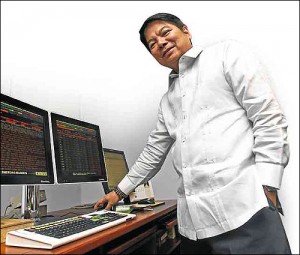New SDA rate cut possible

MANILA, Philippines—As speculations abound that the interest rate on special deposit accounts (SDAs) would be slashed further, the Bangko Sentral ng Pilipinas said it could not rule out another rate cut.
BSP Governor Amando Tetangco Jr. said the monetary authority wanted banks to withdraw some of their funds from the SDA facility and use these to lend more to businesses in support of job-generating investments.
“What the BSP is trying to do is encourage a shift of the funds out of the SDA and to the real sector. This is the reason for the past rate cuts,” Tetangco told reporters.
“We will have to study that,” the BSP chief said when asked if another cut in the SDA rate was necessary to achieve the objective of fueling more investment activities within the economy.
Since the start of the year, the BSP has cut the interest rate on SDAs three times, each by 50 basis points. The moves have brought the rate to a historic low of 2 percent.
Latest data from the BSP showed that as of April 12, deposits at the SDA facility of the central bank hit a new record high of P1.98 trillion despite the first two rate cuts in January and March.
It remains to be seen whether the last rate cut, implemented on April 25, has started to encourage banks to pull out some of their deposits. Some financial market players, however, suspected that any further drop in the amount of SDA funds, if at all, would not be big given the inherent attractiveness of the SDAs.
Apart from being virtually risk-free, they said SDAs still offered a higher interest rate compared with short-term government securities.
Bank lending actually was growing at a double-digit pace, but the BSP wanted to see the robust credit growth being sustained to support higher investments.
The BSP earlier reported that total loans of universal and commercial banks in the country reached P3.22 trillion as of the end of March, up 14.2 percent from P2.82 trillion as of the same period last year.
Tetangco said there was room for credit to grow in the Philippines, noting that credit-to-GDP ratio (which is the proportion of total outstanding loans from banks and non-banks to the economy’s gross domestic product) of less than 50 percent was still significantly lower than in neighboring countries. He said that in some countries, the ratio stood at more than 100 percent.
The BSP wanted credit to go particularly to businesses that generate jobs, rather than in portfolio assets, so that the economy’s growth would translate to higher employment and lower poverty.
But Tetangco said bank loans alone would not be enough to boost investments. He said credit growth should be complemented by rising investments in infrastructure, one of the crucial requirements of foreign investors in deciding to do business in a country.
